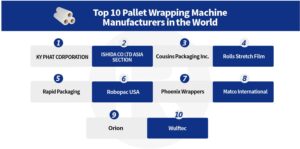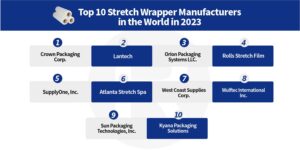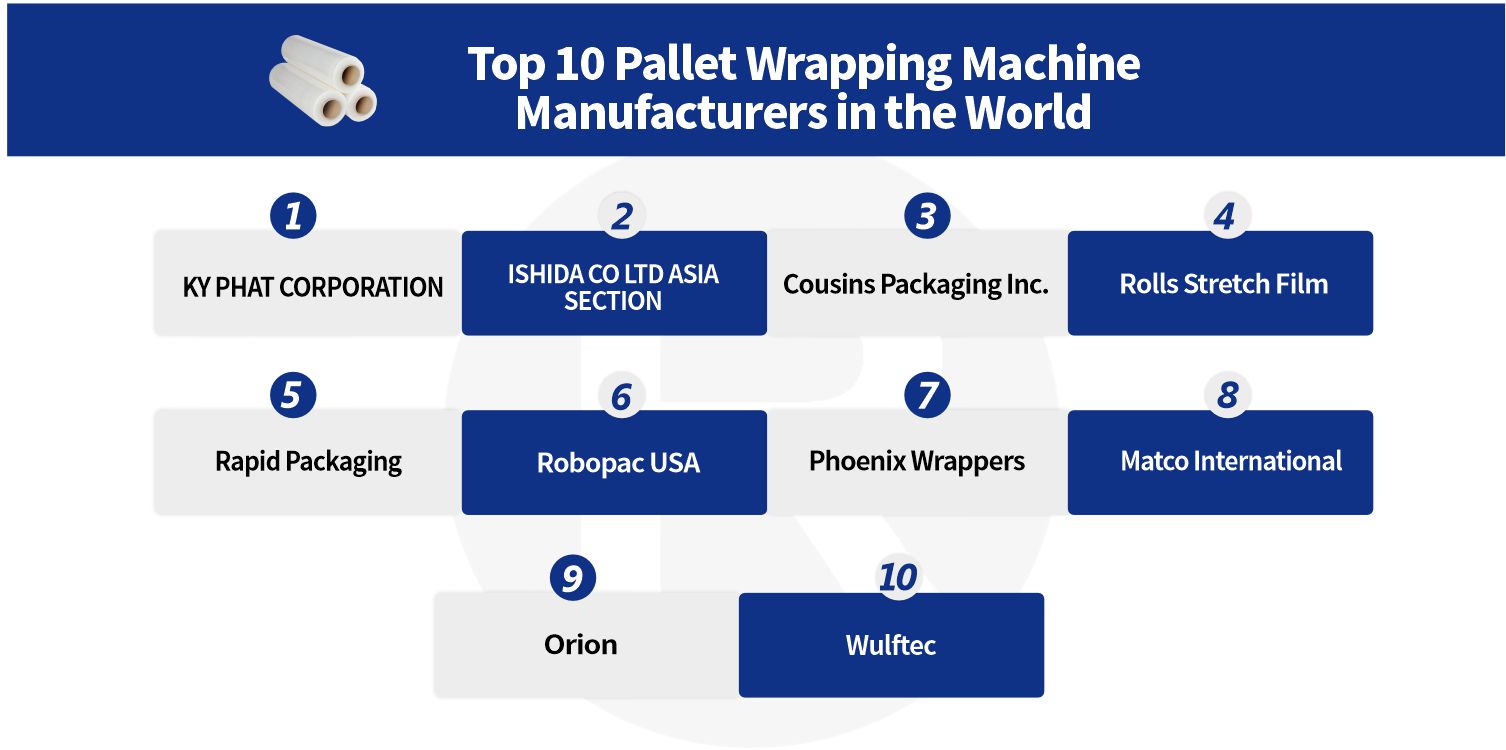Welcome to the ultimate guide on evaluating stretch film quality! Are you tired of dealing with damaged products due to low-quality stretch films? Look no further because we’ve got you covered! Our expert tips and tricks on assessing the strength of your stretch film will help you ensure that your products are packaged securely and safely. So, let’s dive in and learn how to choose the best stretch films for all your packaging needs!
How to evaluate stretch film quality:
- Check the thickness of the stretch film. Thicker films tend to be stronger and more durable.
- Assess the clarity of the film. High-quality stretch films should have a clear, consistent appearance without any haziness or discoloration.
- Test the film’s elasticity by stretching it. Good stretch films will exhibit strong resistance to tearing and snapping back into shape after being stretched.
- Evaluate the clinginess of the film. Premium stretch films tend to have high cling properties, meaning that they stick well to surfaces and provide a secure hold.
- Examine the roll’s weight and length. Quality stretch films typically come in larger sizes and heavier weights, indicating that they can withstand more wear and tear.
By following these guidelines, you’ll be able to determine which stretch films are best suited for your specific packaging needs.

In this article, you’ll learn how to determine which stretch films are best for your specific needs. Whether you’re a business owner looking to protect your products during shipping or just a savvy shopper trying to ensure safe storage, this guide has something for everyone. So, get ready to say goodbye to flimsy packaging and hello to peace of mind with our comprehensive guide on evaluating stretch film quality!
Importance of evaluating the quality of stretch film
Evaluating the quality of stretch film is crucial to ensuring that your products are packaged safely and securely. Here are some reasons why assessing stretch film quality is important:
- Protects products during shipping: The primary function of stretch film is to protect products from damage during transport. Choosing a high-quality film will help ensure that your products arrive at their destination in pristine condition.
- Saves money: Low-quality stretch films may tear or break, leading to product damage and costly replacements. Evaluating the strength and durability of the film can help you choose a reliable option that will save you money in the long run.
- Improves efficiency: Using a stretch film that is easy to apply and secures products quickly can improve packaging efficiency. By evaluating the clinginess and elasticity of the film, you can find an option that streamlines your packaging process.
- Enhances customer satisfaction: Customers expect to receive products that are well-packaged and undamaged. Choosing a high-quality stretch film can help you meet these expectations and increase customer satisfaction.
Evaluating the quality of stretch film is a necessary step in protecting your products, saving money, improving efficiency, and satisfying customers.
Table 1: Stretch Film Properties and Quality Indicators
| Property | Description | Quality Indicator |
|---|---|---|
| Clarity | Ability to clearly see through the film | High-quality film should have high clarity for easy identification of wrapped items |
| Puncture Resistance | Ability to withstand piercing without tearing | High-quality film should have high puncture resistance to secure wrapped items |
| Tear Resistance | Ability to withstand tears from sharp corners and edges | High-quality film should resist tears to maintain stability of wrapped items |
| Stretchability | Percentage the film can be stretched from its original size | High-quality film should be highly stretchable to accommodate various sizes of packages |
| Load Retention | Ability to maintain load stability over time | High-quality film should have high load retention to ensure long-term stability of the package |
Significance of using high-quality stretch film in various applications
Using high-quality stretch film is significant in various applications due to the following reasons:

- Ensures product safety and protection – High-quality stretch films provide superior protection to products during transportation, handling, and storage. It minimizes the risk of damage from moisture, dust, and other external factors.
- Reduces costs and waste – Low-quality stretch films tear easily, leading to re-wrapping or replacement of damaged products, which results in higher costs and waste. Using high-quality stretch films ensures that products are packaged securely and prevents the need for additional wrapping or replacements.
- Improves operational efficiency – High-quality stretch films are easier to handle and apply, reducing packaging time and improving operational efficiency. They also require less energy to wrap around products, thus saving on labor costs.
- Enhances brand image and customer satisfaction – Using high-quality stretch film demonstrates your commitment to quality and attention to detail, which can enhance your brand image and reputation. It also increases customer satisfaction by ensuring that products arrive in excellent condition.
Table 2: Stretch Film Thickness and Application
| Thickness (gauge) | Application | Recommended Load Weight |
|---|---|---|
| 60 | Light, smaller items | Up to 1000 lbs |
| 70 | Medium, mixed items | 1000 – 2000 lbs |
| 80 | Heavy, larger items | 2000 – 3000 lbs |
| 90+ | Speciality, large irregular loads | 3000+ lbs |
Using high-quality stretch film is essential in various applications as it provides superior product protection, reduces waste, improves operational efficiency, and enhances brand image and customer satisfaction.
Factors to consider when evaluating the quality of stretch film
The quality of stretch film depends on various factors. Here are some key considerations to keep in mind when evaluating the quality of stretch film:
Film thickness and gauge
The thickness or gauge of stretch film refers to its overall thickness, measured in mils or microns. A thicker film is generally stronger and more durable, providing better protection to products during transportation and storage.
Film clarity and transparency
High-quality stretch film should have a clear and consistent appearance without any haziness or discoloration. This allows for easy visibility of products and helps to identify potential damage or tampering.
Stretchability and elongation
Good stretch films exhibit strong resistance to tearing and snapping back into shape after being stretched. They should also be able to stretch to a certain degree without breaking or losing their elasticity.
Film strength and tear resistance
The strength and tear resistance of stretch film determine its ability to withstand stress and impact during transportation. A high-quality film should resist tears and punctures while maintaining its strength.
Film cling and adhesion properties
Clingy films stick well to surfaces and provide a secure hold. Premium stretch films tend to have high cling properties, which help to prevent slipping or shifting during transportation.
Compatibility with different types of loads and equipment
Stretch film must be compatible with different types of loads and equipment, such as automated stretch wrapping machines or manual pallet jacks. Choosing a compatible film reduces the risk of damage or malfunction during packaging.
By considering these factors, you can evaluate the quality of stretch film to choose the best option for your unique packaging needs.

Testing methods for assessing stretch film quality
When evaluating the quality of stretch film, there are various testing methods that can be used to determine its strength and durability. Here are some common testing methods:
Tensile strength testing
This test measures the force required to pull a sample of stretch film until it breaks. It is used to determine the maximum load that the film can withstand without breaking.
Tear resistance testing
In this test, a sample of stretch film is cut with a blade and then pulled apart to measure its resistance to tearing. Higher tear resistance indicates a stronger and more durable film.
Puncture resistance testing
This test measures the ability of stretch film to resist punctures from sharp objects. It involves pushing a sharp object into a sample of film to determine the force required to puncture it.
Film elongation and stretchability testing
These tests measure the amount of stretch that a film can undergo before breaking. They help to determine the elasticity and flexibility of the film.
Load containment and stability testing
This test assesses how well stretch film holds loads in place during transportation. It involves subjecting a wrapped load to simulated conditions of transportation, such as vibration or impact, to determine the ability of the film to contain the load.
By using these testing methods, manufacturers and users can evaluate the quality of stretch film and choose the best option for their specific needs.
Table 3: Stretch Film Quality Assessment Scorecard
| Evaluation Parameter | Poor (1-2) | Fair (3-4) | Good (5-6) | Excellent (7-8) | Outstanding (9-10) |
|---|---|---|---|---|---|
| Clarity | Not clear at all | Barely clear | Somewhat clear | Very clear | Crystal clear |
| Puncture Resistance | Rips easily | Rips often | Sometimes rips | Rarely rips | Never rips |
| Tear Resistance | Tears easily | Tears often | Sometimes tears | Rarely tears | Never tears |
| Stretchability | Stretches minimally | Stretches a bit | Stretches to a fair degree | Stretches very well | Stretches exceedingly well |
| Load Retention | Barely holds load | Holds some load | Holds most of the load | Holds the load very well | Holds the load exceptionally well |
Standards and certifications for stretch film quality
There are several standards and certifications that exist for stretch film quality. Here are a few examples:
International standards and guidelines
There are various international standards and guidelines related to stretch film quality, including those set by the International Organization for Standardization (ISO) and the American Society for Testing and Materials (ASTM). These standards provide guidelines for testing methods and performance requirements for stretch films.
ISO certifications and specifications
The ISO has developed several certifications and specifications related to stretch film quality, including ISO 9001, which outlines quality management systems, and ISO 14001, which focuses on environmental management systems.
Industry-specific certifications and approvals
Certain industries have specific certifications and approvals for stretch film quality. For example, in the food industry, stretch films must meet FDA regulations for food safety. Similarly, in the medical industry, stretch films must meet certain standards for infection control and performance.
By adhering to these standards and certifications, manufacturers can ensure that their stretch films meet certain performance and quality requirements. Customers can also use these certifications as a guide when choosing stretch films for their specific needs.
Importance of supplier and manufacturer reputation
The reputation of suppliers and manufacturers is crucial when it comes to selecting high-quality stretch films. Here are some reasons why:
Researching and selecting reputable suppliers
Choosing a reputable supplier ensures that you receive high-quality stretch films that meet your requirements. Reputable suppliers typically have a proven track record of supplying quality products, offering reliable delivery times, and providing excellent customer service.
Evaluating manufacturer certifications and quality control processes
Manufacturers with recognized certifications, such as ISO or ASTM standards, demonstrate their commitment to producing quality products. They also implement robust quality control processes to ensure consistent product performance.
Customer reviews and feedback
Customer reviews and feedback offer insight into the quality of products and services provided by suppliers and manufacturers. Positive reviews and feedback can provide reassurance that the products are of high quality, while negative reviews should be taken into consideration when evaluating potential suppliers and manufacturers.
By researching and selecting reputable suppliers, evaluating manufacturer certifications and quality control processes, and considering customer reviews and feedback, you can ensure that you are receiving high-quality stretch films that meet your specific needs. This can help prevent issues such as product damage, waste, and customer dissatisfaction, saving time and money in the long run.

By evaluating factors such as film thickness, clarity, stretchability, strength, clinginess, and compatibility with different types of loads and equipment, businesses and individuals can choose high-quality stretch films that provide superior product protection, reduce waste, improve operational efficiency, and enhance brand image and customer satisfaction.By following these guidelines, you can package your products with confidence and ensure that they arrive in excellent condition.













